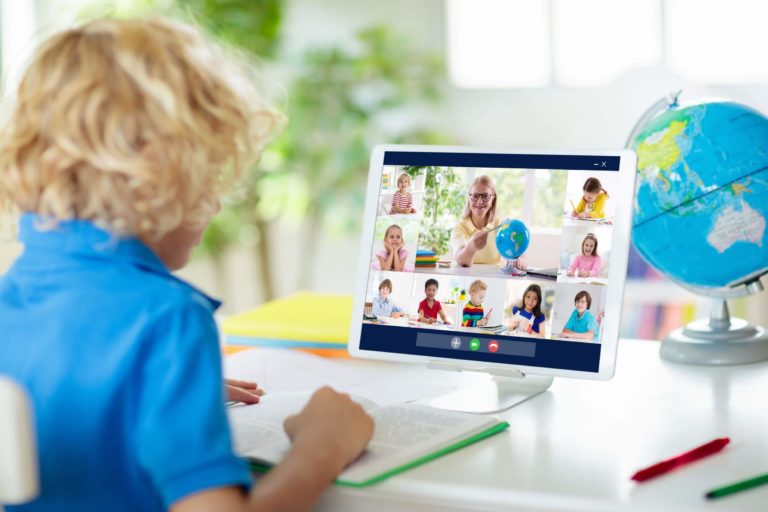What is Assessment and Why is it Important?
Assessment arguably can be described as the most critical feature of effective student instruction. By incorporating formative and summative assessment strategies, educators can identify gaps within students’ understanding of concepts and also determine areas in which students are excelling and may benefit from enrichment activities.
How to Assess Student Learning Remotely
Although it may seem like an oversimplification, remote assessment follows the same best practices as traditional classroom assessment with the physical proximity of instructors and students removed.
Within a remote learning environment, educators should adhere to the traditional pattern which includes pre-testing students’ knowledge of new concepts in order to identify their levels of prior knowledge to subsequently drive the instructional process; incorporating formative assessments in the form of mini-quizzes, classroom exit tickets, homework, etc. in order to determine concept and process proficiency; and finally, utilizing summative assessment strategies including unit tests and/or project-based authentic assessments to determine mastery.
Choose Tools that Serve Your Purpose
The tools available for remote student assessment are limitless, so identifying applications that best serve each assessment purpose is critical. For example a diagnostic pre-test in a remote environment may be accomplished through the use of an interactive educational gaming app such as Kahoot! or a simple fillable survey form developed within an online learning platform such as Google Classroom. In this manner, educators can gain a rapid understanding of students’ familiarity with upcoming instructional concepts. An added benefit of these applications is that the results are tabulated instantly, thus eliminating the need for educators to tabulate them manually.
In order to formatively assess students’ understanding of concepts and processes, posting questions within a classroom stream on an online learning platform is effective. Through these avenues, students can respond in writing electronically through attached documents or even complete math or science problems on paper and then simply upload digital photos of their written work. In this manner, instructors can gain an understanding of individual students’ abilities both with regard to knowledge and process.
Summative assessment can adopt a variety of forms including traditional tests delivered via fillable electronic forms that incorporate multiple choice, short answer, and extended response questions, as well as authentic, project-based assessments that demonstrate students’ levels of understanding related to an entire unit or series of lessons. The possibilities for authentic summative assessment are limitless and may rely upon internet research, development of presentations, video or photo-based productions, and electronically-submitted research papers, among countless other methods.
While choosing appropriate remote assessment tools may appear challenging, educators must remember that they are not isolated. As in traditional learning environments, teachers should network with other instructors both within their organizations and via the multitude of available online educational forums in order to collaborate and broaden their knowledge bases while celebrating their successes.
Collect Data Consistently
Data collection and interpretation are especially critical within remote learning environments, as the ability for first-person observance of student performance is limited. Therefore, educators must maintain ongoing data related to every student within their charges. Performance data gathered through the previously discussed methods informs the next steps in the learning process for each student and therefore must be updated and revisited every time a new diagnostic, formative, or summative assessment strategy has been employed.
Routinely Check for Understanding
In order to monitor students’ progress toward content mastery, instructors must regularly check for understanding in a manner similar to traditional face-to-face learning environments. These checks can be as simple as a “Question of the Day” to which students respond electronically or a teacher-developed online discussion board in which students can post their questions related to specific tasks and assignments. These tools, combined with routine assessment, promote the creation of a virtual classroom community in which students are encouraged to collaborate with the instructor and their peers, which assists in alleviating feelings of isolation that may occur as a result of learning remotely.
Remember to Provide Feedback
Assessment for student learning without appropriate feedback is useless. As a result, educators in an online learning environment must provide timely and productive comments electronically in order to promote student understanding by dispelling misconceptions within the learning process. Additionally, positive feedback should be shared routinely in order to encourage students and assist in keeping them focused and intrinsically motivated to succeed.
Plan One-on-One Time
Although elearning environments can be both efficient and effective, countless educators likely would argue that the best component of teaching is the human interaction that occurs. While teachers and students are not physically together within an online setting, the regular use of video conferencing platforms such as Zoom or Google Meet provides opportunities for teachers and students to interact in real time. An important practice in addition to scheduling “live” class sessions is for instructors to establish virtual office hours during which they are available to video conference with students in order to answer questions and provide verbal feedback. This strategy greatly assists in transforming remote classroom environments into true virtual learning communities.




